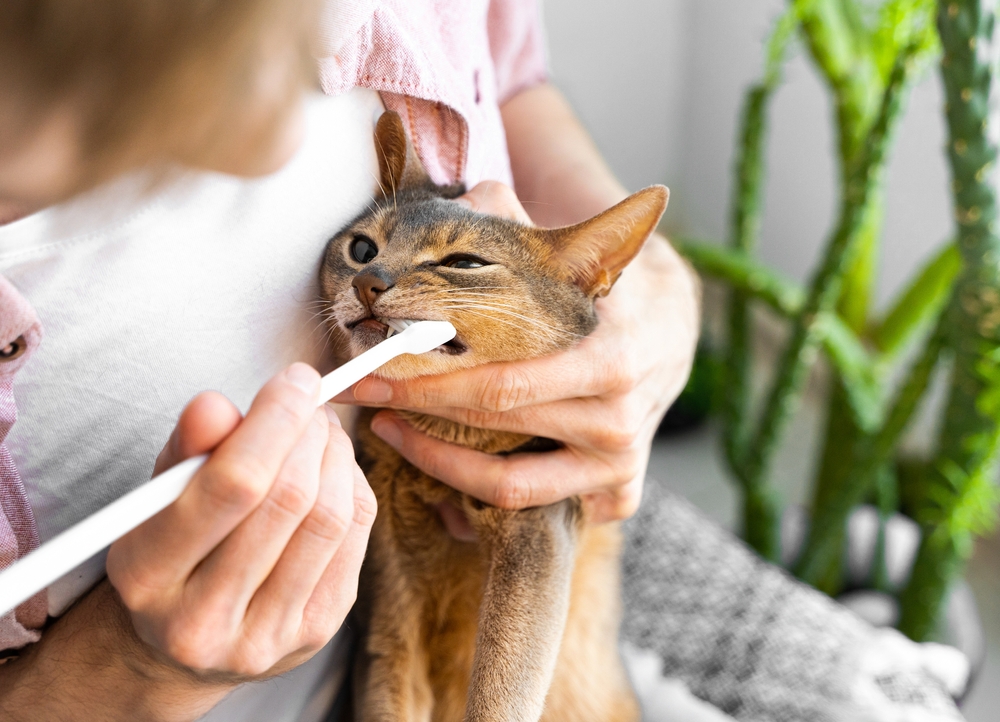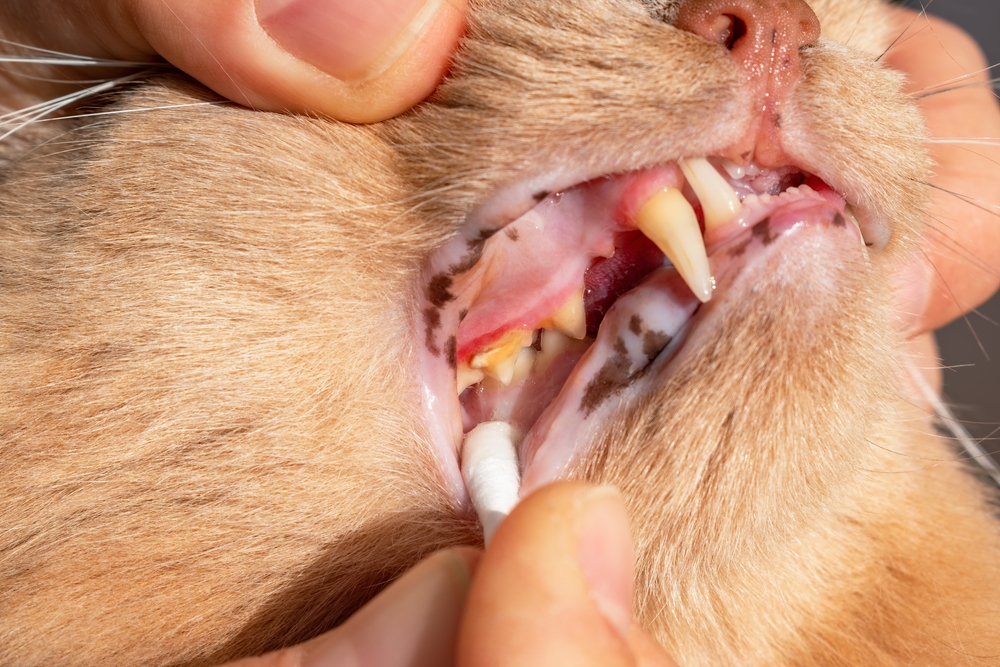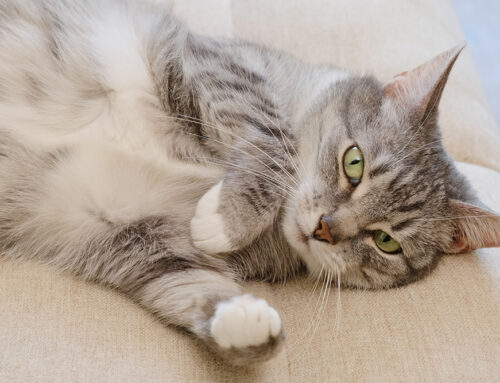Feline resorptive lesions (FRLs), also known as tooth resorption, are a prevalent dental issue in cats of all ages. These lesions cause the breakdown of a tooth’s structure, leading to pain and potential tooth loss. Understanding the causes, identifying signs early, and knowing the treatment options can significantly improve an affected cat’s quality of life. Our Willow Wood Animal Hospital team explains what you need to know about resorptive lesions for your whiskered pal’s health and well-being.
What causes feline resorptive lesions?
FRLs’ exact cause remains unclear. However, several factors are believed to contribute to their development:
- Genetics — Certain breeds, such as Siamese and Persian cats, are predisposed to developing these lesions, suggesting a genetic component.
- Diet — High vitamin D levels in commercial cat foods may be linked to cats’ increased tooth resorption risk.
- Inflammation — Chronic mouth inflammation, such as that caused by gingivitis or periodontal disease, may contribute to resorptive lesions’ formation.
- Immune response — An abnormal immune response, in which the body’s cells start attacking the tooth, might play a role in these lesions’ development.
What are resorptive lesion signs in cats?
Resorptive lesions can be challenging to detect, especially in their early stages. Cats will often hide pain and discomfort signs. You should suspect your cat has FRLs if they exhibit any of the following signs:
- Drooling — Excessive or persistent drooling can signify oral discomfort caused by resorptive lesions.
- Difficulty eating — Cats with resorptive lesions may chew on one side of their mouth, drop food, or refuse to eat hard foods.
- Bleeding — Blood on toys, food, or the cat’s water dish can indicate oral health issues.
- Behavioral changes — Affected cats may become irritable or less active because of their chronic oral pain.
- Visible lesions — In advanced cases, the lesions may be visible on the tooth as a red or dark spot near the gumline.
How are resorptive lesions in cats diagnosed?
If resorptive lesions are suspected, our Willow Wood Animal Hospital team will conduct a thorough dental exam and perform other tests to make a diagnosis. This process typically includes:
- Visual inspection — Our veterinarian will look for lesions during a routine dental exam.
- Dental probing — This procedure involves gently probing the teeth and gums to detect abnormalities or pain.
- Taking X-rays — Dental radiographs are essential for confirming the diagnosis and assessing the extent of the lesions, as many lesions occur below the gumline.
How are feline resorptive lesions treated?
FRL treatment’s primary goal is to alleviate pain and prevent your cat from experiencing further dental damage. Treatment options include:
- Extraction — In most cases, the affected tooth or teeth need to be extracted to eliminate pain and prevent the lesions from spreading.
- Pain management — Pain relief is paramount for your furry friend during and after treatment. Our veterinarian may prescribe medications such as nonsteroidal anti-inflammatory drugs (NSAIDs) or opioids.
- Follow-up care — Regular dental exams and X-rays are necessary to monitor for new lesions and ensure your cat’s overall oral health.
How are feline resorptive lesions prevented?

While resorptive lesions cannot be prevented, mainly if a cat has a genetic predisposition to the disease, specific measures can help reduce the risk, such as:
- Regular dental care — Brushing your cat’s teeth, providing dental treats, and scheduling regular veterinary dental exams and professional cleanings can help maintain your cat’s oral health, reducing their dental issue risk.
- Healthy diet — Feeding your whiskered friend a well-balanced diet with appropriate vitamin levels can support overall dental health. Discuss the best dietary options for your cat with our veterinarian.
- Monitoring for problems — Being vigilant about your cat’s eating habits and behavior can help catch potential dental issues early.
Resorptive lesions are a significant dental issue, but with proper care and timely intervention, an affected cat can lead a comfortable, healthy life. Regular dental care, a balanced diet, and early disease detection are key to managing and preventing this painful condition. If you suspect your cat has FRLs, schedule a dental exam with our Willow Wood Animal Hospital team for an accurate diagnosis and appropriate treatment plan.







Leave A Comment